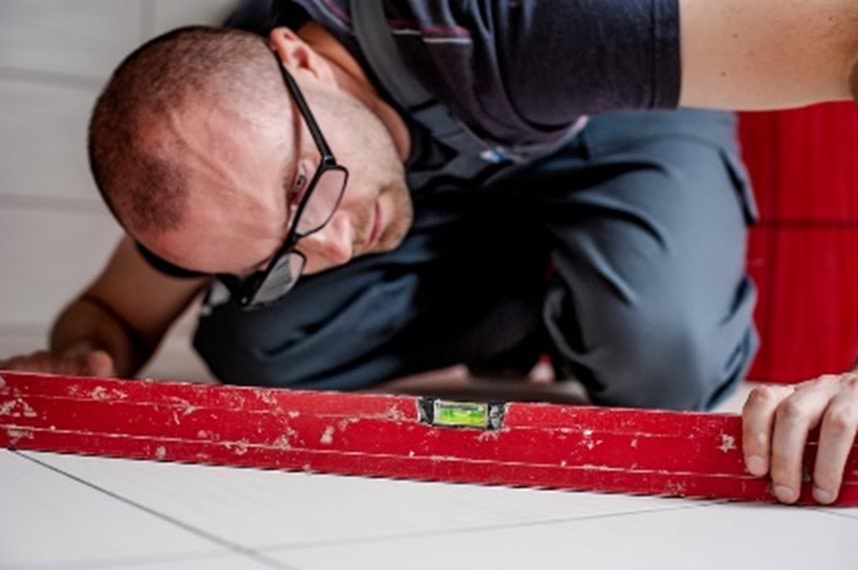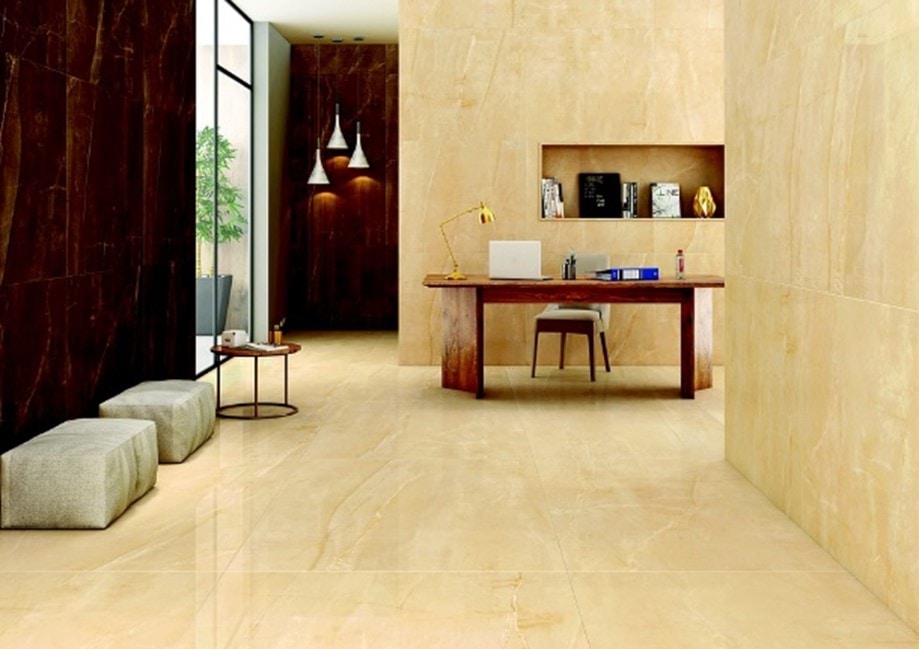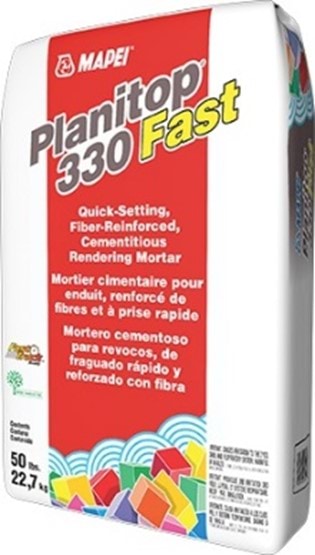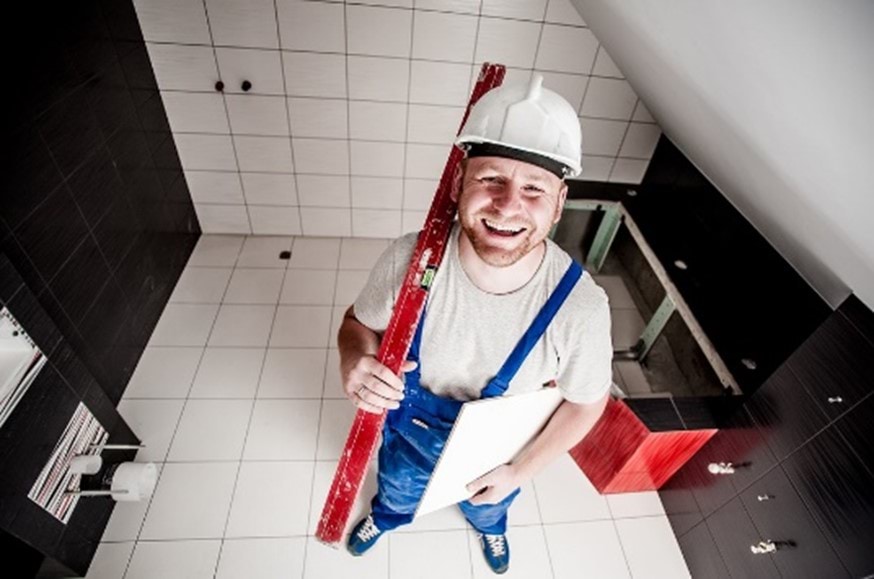
There is an old adage that says, “By failing to prepare, you are preparing to fail.” These brilliant words can be echoed by every tile and flooring installer today. We all know that a ceramic tile installation is only as good as its preparation.
I was fortunate to present at The International Surfaces Event (TISE) this year on the subject: “How Flat is Flat – Surface Preparation for Tile Installations.” What impressed me was that the exhibit hall didn’t open for another day, yet these attendees showed up in force to hear and discuss surface preparation for tile in both commercial and residential installations.
Our customers are commonly asking us about substrate preparation for a tile floor or wall. Many of these questions are regarding the preparation and installation of large-format tiles and gauged porcelain tile (GPT) panels/slabs. These large-format and GPT tiles can provide ease of maintenance, incredible durability, good impact resistance and a beautiful finish that no wallpaper, FRP panels in a commercial kitchen or other floor finish can achieve. Performing at this level requires a solid foundation, a flat substrate, good mortar coverage and a proper method of installation to obtain excellent lifecycle costs when you install tile.

The flooring industry has dealt with concrete floor patching and leveling for many years. It is a “given” that when you are installing engineered wood flooring, pressure treated plywood, carpet, VCT or sheet vinyl flooring, you will do some floor preparation by using a self-leveler or floor patch and skimming the area. That has not always been the case with existing ceramic tile or stone installation systems. To prepare substrates to receive ceramic tile or GPT, the practice of “making up a little” with a thin-set mortar was common.
In addition to ceramic tiles that seem to get larger and larger, sizes are commonly more rectangular and the edges are often square or rectified. This combination of characteristics can potentially highlight issues like tile lippage on poorly prepared substrates. Lippage is defined in the ANSI A108.02 standard as “... differences in elevation between edges of adjacent tile modules.” Lippage can cause tripping, broken tile edges, and unsightly floor and wall installations. To learn more about lippage and minimizing its effect, see Section 4.3.7 (“Lippage – Guidelines, Explanation and Caution”) of ANSI A108.02.
With gauged porcelain tile, tile has gotten larger and flatter with crisp, sharp square edges. You can’t reduce the effect of irregular wall or floor substrates with tiles as large as 5' 3" x 10' 6" (1.6 x 3.2 m) and as thin as 1/8" (3 mm) without spending time, materials and money working at it. The tile industry requirements for wall and floor substrate deviation changed a few years ago because it was recognized that traditional tolerances for substrate deviation were not enough.
Today, in the ANSI A108.02 standard, the general requirements for tile installations for both sub-floor surfaces (Section 4.1.4.3.1) and vertical surfaces (Section 4.1.4.3.2) include the following: “For tiles with all edges shorter than 15" (38.1 cm), the maximum allowable variation is no more than 1/4" in 10' (6 mm in 305 cm) and no more than 1/16" in 1' (1.5 mm in 2.5 cm) from the required plane, when measured from the high points in the surface. For tile with at least one edge 15" (38.1 cm) or longer, the maximum allowable variation is no more than 1/8" in 10' (3 mm in 305 cm) and no more than 1/16" in 2' (1.5 mm in 61 cm) from the required plane, when measured from the high points in the surface.”
Tile installers were struggling to get acceptable substrates at 1/4" in 10' (6 mm in 305 cm) before. How can they get 1/8" in 10' (3 mm in 305 cm)? It requires good surface preparation with products intended for that purpose, such as MAPEI’s offering of self-levelers and premium cement-based patching materials.
 The volume of tile installed on walls has grown significantly. The large format may have a lot of do with that. In the past, a lot of those wall substrates were floated out with proper renders and mortar beds. There was a real advantage in that because it was mechanically attached, the float coat could be very flat and built out to accommodate the size of the tile. Today, we find that if a mortar bed on a wall is specified, it is frequently “value-engineered” out of the installation and gypsum board (primed and used in dry areas) or cement backer board units are installed over metal or wood studs in its place. Large-format and GPT tiles have really highlighted our need for surface-preparation products for walls. Sure, we had some floor patches that could work on a wall, but they were not formulated to work specifically on walls. The ideal wall-patching material would be non-sag and fast-setting with good workability. It should have the ability to be floated fairly thin, but also be built up enough beyond the minimum thickness to treat some of the big bows between studs that installers had to address in gypsum board walls with GPT tile going on them.
The volume of tile installed on walls has grown significantly. The large format may have a lot of do with that. In the past, a lot of those wall substrates were floated out with proper renders and mortar beds. There was a real advantage in that because it was mechanically attached, the float coat could be very flat and built out to accommodate the size of the tile. Today, we find that if a mortar bed on a wall is specified, it is frequently “value-engineered” out of the installation and gypsum board (primed and used in dry areas) or cement backer board units are installed over metal or wood studs in its place. Large-format and GPT tiles have really highlighted our need for surface-preparation products for walls. Sure, we had some floor patches that could work on a wall, but they were not formulated to work specifically on walls. The ideal wall-patching material would be non-sag and fast-setting with good workability. It should have the ability to be floated fairly thin, but also be built up enough beyond the minimum thickness to treat some of the big bows between studs that installers had to address in gypsum board walls with GPT tile going on them.
MAPEI’s Planitop 330 Fast addresses those concerns of the installer. This product was suggested to us by customers based on their need; we listened and began development. Planitop 330 Fast is fast-setting and fiber-reinforced with an incredibly long stroke on the wall. Its fast-setting characteristics allow the installer to trowel it up on the wall, screed it, shape it and shave it, fine-tuning it on the wall so that tiling can begin as soon as 90 minutes from application. The fiber reinforcement allows it to be easily applied and to be non-sag, making it ideal for floating out irregularities in a wall. An installer who is used to applying mud on a wall will appreciate the long stroke or how you can fill a trowel and start applying it at the bottom of the wall and float it all the way up the wall.

One of the great benefits of Planitop 330 Fast is that it can be built up as thin as 1/8" (3 mm) and used in those difficult repair areas where it can go as thick as 1-1/4" (3.2 cm). This patching material can also be used to create ramps and to smooth or level areas. It can be used on the floor, and I expect it to be used a lot for that purpose; but it was conceived, formulated and designed for use on walls. Installers will understand the benefit of a product designed for their needs and formulated to reduce their issues on a jobsite before installing large tile. For example, the prevalent use of thin-set to repair or correct substrates has problems like spot bonding and a buildup so thick that it causes failures because of shrinkage or, even worse, a loss of bond.
In this short article, I have only been able to address leveling and patching irregular wall and floor substrates. There are many other parts to surface preparation, like careful inspection of the original substrate, membranes, moisture testing and concrete surface profiles, to name a few. Installers should be getting paid to prepare the substrate correctly to meet industry substrate tolerances and project specifications. Knowing the industry standards, what is happening on the jobsite before the scheduled start of the tile installation and what it will take to get surfaces properly prepared will help installers provide a successful tile installation that will last for the life cycle the owner expects from the tile finish.
About the author:
Jim Whitfield
Jim is the Director of MAPEI Corporation’s Technical Services and has been active in many industry committees over the years. Currently serving as President of the Materials & Methods Standards Association and selected for the National Tile Contractors Association (NTCA) Technical Committee, he also participates as a voting member on the ANSI A108 Committee and the Tile Council of North America’s Handbook Committee. In 2001, he was honored with Fellowship by the Construction Specifications Institute, thanks to his contributions to education in the construction industry and his exemplary service to CSI.
Comments
Load more comments